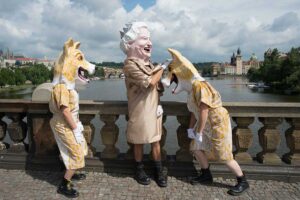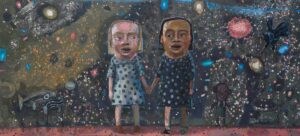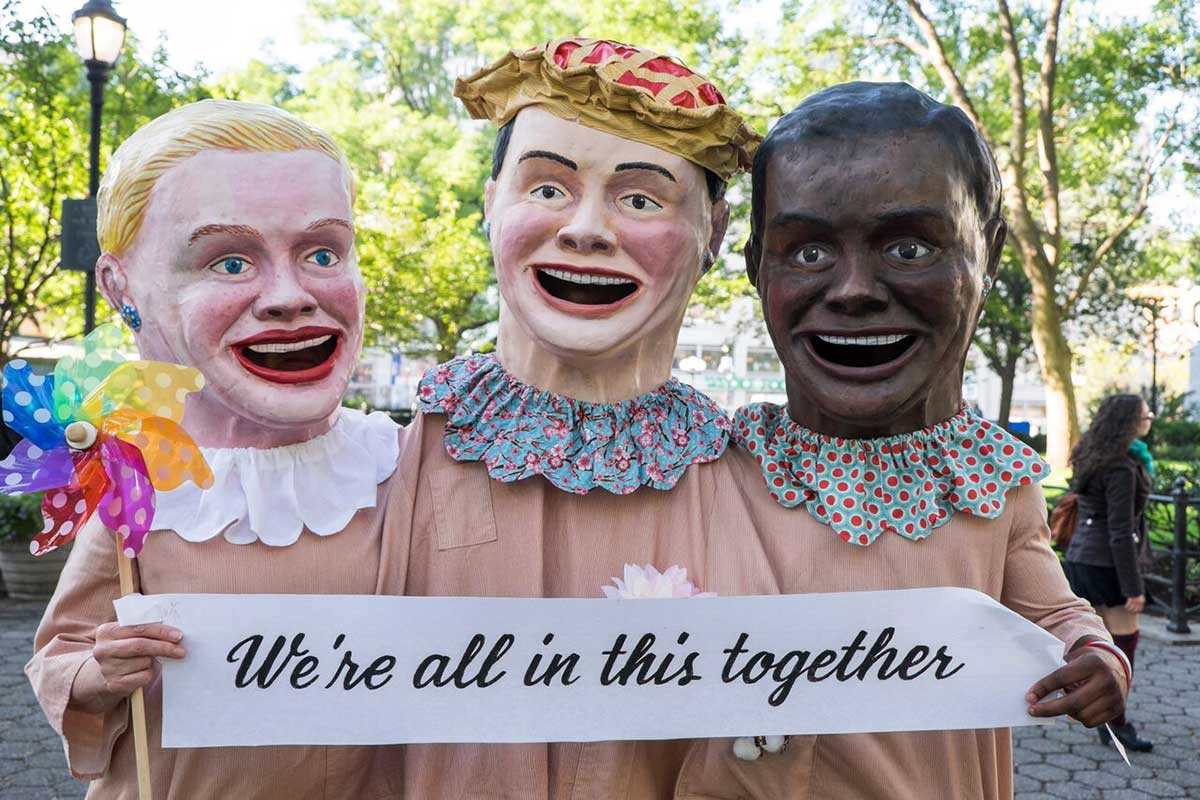WILSON, N.C. — February 21, 2023 — Barton Art Galleries is delighted to announce the opening of Megan Marlatt’s exhibition “Mummer” on March 13, with a reception planned for Thursday, March 16, 5-7 pm. The gallery talk will begin at 6 p.m. The reception and the exhibition is open to the public at no charge, and the community is invited to attend. The exhibition will be open from March 13-April 23, 2023.
 Marlatt also will be Barton’s spring artist-in-residence, working with the Barton art students, March 13-25. She will return for a Community Earth Day Parade Celebration on the Barton Campus at Noon on Saturday, April 22. The parade will feature large paper mache Sea Animal heads created by Marlatt and the Barton art students. Guests are invited to meet at outside the Case Art Building to join in the fun.
Marlatt also will be Barton’s spring artist-in-residence, working with the Barton art students, March 13-25. She will return for a Community Earth Day Parade Celebration on the Barton Campus at Noon on Saturday, April 22. The parade will feature large paper mache Sea Animal heads created by Marlatt and the Barton art students. Guests are invited to meet at outside the Case Art Building to join in the fun.
Marlatt’s “Mummer” exhibition is a product of her deep interest in the art and history of Carnival. In describing her work, she says, “I am interested in the liminal, the space in between boundaries or at a threshold. Since I first learned to make big head masks (or capgrossos), from the Catalonian folk artists Ventura and Hosta in 2012, I have studied the European tradition of pre-Lenten carnival, (including under a Fulbright Scholar Award to Belgium in 2018.) Most Americans think of amusement park rides and arcade games when they hear the word “carnival,” but I’m referring to an old event, evolved from Western pagan rituals and adapted into European Catholic and Protestant culture. It’s the same carnival Bruegel painted in “The Fight Between Carnival and Lent” nearly 500 years ago. When I see the present day Binche Giles of Belgium, the German Wild Men of the Alps, the Kukeri of Bulgaria or the Snap Critters of Northern Italy, I know the Western European culture that my art stems from is not as rational or objective as it pretends to be. Rooted in an ancient agrarian society dependent on the changing seasons, carnival’s time frame teeters between the weakening night force of winter and the strengthening day force of spring. Therefore, many carnival rituals across Western Europe involve shedding the evils of winter, waking up the icy earth and ushering in the fecund, warmer months of spring. It is in this liminal space and time between the changes of the seasons that a void in the universe exists and the magic of carnival emerges.”


For more information, please contact Maureen O’Neill, director of exhibitions and educational programming, at [email protected] or 252-399-6476.
END


